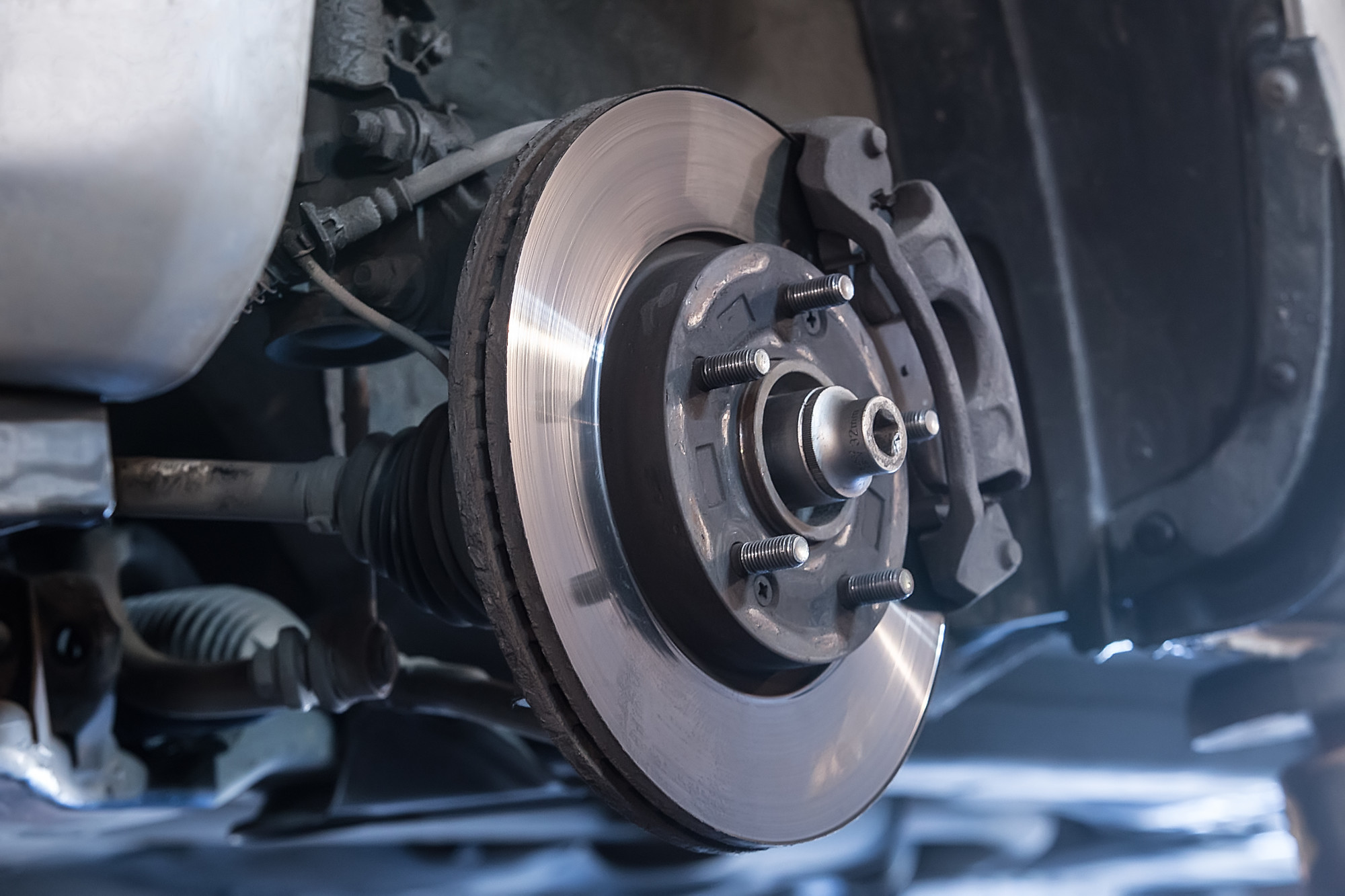Have you ever wondered how brakes work? While you might have a basic understanding of how mechanical brakes function, newer systems might prove somewhat confusing. Fortunately, we’re here to help.
Let’s explore the history of brakes, the various types of brakes, and modern braking systems to answer the question, “How do brakes work?” After all, it can be tricky to choose the best brakes for your vehicle if you’re unaware of your options.
How Do Brakes Work?
Most people are aware of what brakes do, but far fewer folks are familiar with how brakes help stop vehicles in motion. Admittedly, gaining a comprehensive understanding of brakes and braking systems can be challenging.
That’s because there are multiple types of brakes and related systems. Becoming familiar with each of them is often the best way to understanding how brakes function. But this process can be time-consuming.
Find Your Online Car Repair Manual Today! ->>
Consequently, we’ve developed a brief explanation concerning the history of brakes, the various types of brakes, and modern braking systems. Hopefully, this information will enlighten you and help you feel more comfortable working with brakes.
A Brief History of Brakes
The wheeled vehicle is nothing new. People have been using wheeled wagons to help them transport goods and travelers for thousands of years. However, the majority of early vehicles were powered by humans or animals.
As such, brakes weren’t entirely necessary. It would take the emergence of the motorized bicycle and the automobile to inspire the invention of the brake. In 1902, the disc brake was invented.
Like most of the brakes that would follow it, it would utilize friction to help bring objects in motion to a full stop. This type of friction brake would take the world by storm, becoming one of the most common and popular brake options.
Disc brakes are still one of the most common kinds of brakes, though there are a handful of worthy competitors.
Types of Brakes
There are two major brake types. By analyzing each of them individually, you could develop a better understanding of how they function and what types of vehicles they’re best suited for.
The most common types of brakes are:
- Disc
- Drum
If you own an older-style bicycle, you may have experience working with a type of brake not listed here. Rim brakes are growing rarer each year, but they’re still found on vintage or budget-friendly bicycles.
These brakes work via a hydraulic or pneumatic system, clamping down hard on bike tires when the brake handle is squeezed. While these types of brakes can be effective, they can also cause damage to worn tires.
There are also emergency and anti-lock brakes, but these are almost exclusively utilized in vehicles. Disc and drum brakes, on the other hand, can be found in a wide variety of machinery.
Consequently, many bicycles now come equipped with disc or drum brakes.
Disc
Disc brakes may be the most common type of brake. These rounded brakes are very similar to their progenitor, the drum brake.
However, while drum brakes can begin to falter and become weak when exposed to high braking demands, disc brakes stay strong. That’s because disc brakes are designed to release heat caused by friction.
This helps to reduce wear and tear on the brakes and can help them remain powerful, even when facing treacherous conditions like steep hillsides or bumpy inclines.
Drum
While disc brakes have been in use for more than a century, drum brakes have likely been around for slightly longer. These brakes get their name from their design.
Unlike modern braking systems, drum brakes were often an integral part of a vehicle’s wheel. All of the braking components were housed inside of a roomy, drum-like space.
When a driver pulled on an attached cable, clamps would descend on the wheels. Some drum wheels also often operated vie pneumatic tubes or hydraulic cables. In this way, drum brakes are somewhat similar to bicycle rim brakes.
Types of Braking Systems
In addition to individual brake types, there are also quite a few braking systems. While there may be four primary types of brakes (excluding rim brakes, of course), there are far more brake systems.
Some brakes are powered by hydraulic or pneumatic pressure. Others function via electromagnetic fields. Still, others are powered electronically. In general, the most commonly found braking systems are:
- Hydraulic
- Mechanical
- Electromagnetic
- Dynamic
Let’s take a closer look at each of these systems to find out how they’re similar and how they differ. Additionally, we’ll offer an example of the types of vehicles each system is commonly used with.
Hydraulic
Hydraulic brake systems function by using pressurized liquid to apply brake pads to a wheel’s sides or rotor. This brake liquid can be a glycol-ether substance, a silicone-based liquid, or it could be mineral oil fluid.
When a vehicle’s brake fluid begins to run low, a driver may experience decreased brake performance. Braking may be delayed or weak, resulting in longer braking periods.
Low brake fluid can also result in a car accident, as a vehicle in motion can be difficult to stop without proper hydraulic pressure. Mechanical brakes may not be as popular as hydraulic options, but they’ll never suffer from low fluid levels.
Mechanical
Mechanical brakes aren’t as common as they once were, but there was a time when nearly every motorized vehicle operated with them. Unlike hydraulic options, mechanical brakes work via a system of pulley cables.
When a person applies their brake, a cable is activated that pulls brake pads down onto the wheels. But mechanical systems provide less power than hydraulic ones. Additionally, mechanical brake cables can snap or tear over time.
If you’re looking to upgrade to one of the most futuristic braking systems, you may want to investigate electromagnetic brake systems.
Electromagnetic
Electromagnetic braking systems are relatively novel. They function via an electronic input that charges an internal magnet, creating a powerful field.
The result is a combination of friction and potent magnetic force, both of which can stop an object in motion. For this reason, electromagnetic options are often seen as a contemporary combination of mechanical and electric systems.
Dynamic
Have you ever wondered how DC injection braking works? While this system isn’t commonly found in many vehicles, it is a boon for electric appliances with strong motors. Some power tools, for example, may need a potent brake to prevent injury.
This system functions by temporarily removing AC input and switching to DC. This creates a magnetic field that can produce enough force to slow a motor to a complete stop.
Learn More Today
How do brakes work? The answer varies depending on the type of brakes and the system being used. In general, brakes function via friction. When a person applies their vehicle’s brakes, clamps squeeze tightly against the rotors, generating friction.
ABS systems function in much the same way, but they apply a slightly more even level of pressure to keep drivers in control of their steering. Dynamic or DC injection options utilize electricity to help slow down electric vehicles.
If you have a question about your vehicle, be sure to contact one of our experienced mechanics today!







